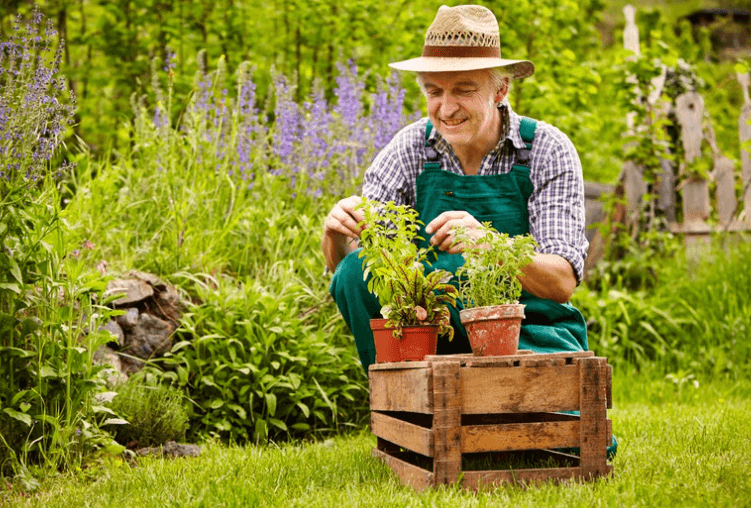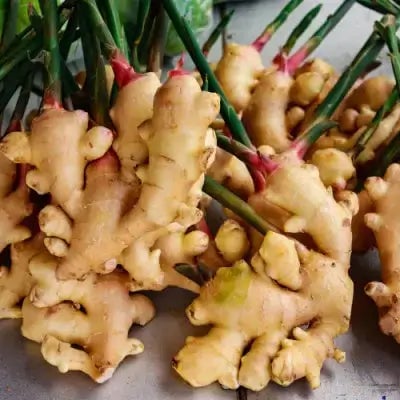Herbal Plant Benefits for Health and Healing
Humans have been using herbs for cooking and healing for countless thousands of years. Even in this era of medications and technologies that would have seemed miraculous even 60 years ago, there’s still a place for the healing power of herbs. Here are some of them:

Irish Moss
Irish moss or pearl moss is not a moss at all but a type of seaweed. It is rich in antiviral and antimicrobial factors and has been used to ease the symptoms of cold, flu, pneumonia, sore throat, and other respiratory tract conditions. It also treats ulcers, indigestion, gastritis, and diarrhea and supports healthy skin by relieving eczema, rashes, sunburn, and psoriasis.
Besides these benefits, Irish moss helps people with diabetes by regulating levels of glucose. Like many other types of seaweed, it is rich in iodine and protects cancer patients from the effects of radiation therapy. It seems to protect against cancer itself. As a demulcent, it soothes mucous membranes.
Golden Seal
A perennial plant whose root is rich in alkaloids, B complex vitamins, minerals, resin, and heavy oils. Herbalists believe the alkaloids in the plant’s root lend it much to its healing properties, including its ability to trigger the immune system. It has been used to treat all manner of ailments for centuries, as tea, wash, or a poultice. It has significant antibiotic properties and is a source of natural insulin, which helps people with diabetes by stabilizing blood sugar levels.

Goldenseal is used to control both internal and external bleeding and helps to control heavy menstrual bleeding. It soothes mucous membranes and is used to alleviate upper respiratory problems such as cold and flu and treat gastrointestinal tract disorders such as ulcers and colitis. When used as a drop of mouthwash, it can heal canker, mouth, and gum sores and is used as an eyewash to cure pink eye.
Ginger
The root of this tropical herb is an excellent tonic for gastrointestinal upsets, including gas, bloating, and indigestion. It is famously used to treat nausea. It also eases cold and flu symptoms and is considered a warming herb that helps the circulatory system. Ginger is used to satisfying a sore throat and helps to regulate the menstrual cycle and relieve dysmenorrhea and sluggishness.

Echinacea

There are three species of this herb: Echinacea purpurea, E. augustifolia, and E. pallida. Native Americans have long used these pretty flowering plants. Echinacea is famous for supporting the immune system and has been used to treat wounds and fight infections such as yeast infections, urinary tract infections, sinus infections, and ear infections. In some studies, the herb was effective against the virus that causes cold sores. It also helps purge the blood of bacteria and viruses. People drink echinacea tea to shorten the length of colds and flu by soothing sore throats, fevers, and coughs. The whole plant is used medicinally, with the roots having more volatile oils and the leaves and flowers having more polysaccharides, which are compounds that stimulate the immune system.
How To Make Your Own Herbal Plant Tea
1. Introduction to Herbal Tea
Making herbal teas has been a longstanding tradition that has extended across multiple cultures throughout history. Consumers value herbal beverages from plant leaves, flowers, seeds, and roots because of their delicate tastes, health benefits, and enjoyable scents. Herbal teas can be purchased from stores, yet making your herbal tea home delivers a rewarding experience. You can customize its flavor profile and guarantee fresh ingredients by making herbal tea yourself. The tea-making process enhances your connection to nature while helping you identify the distinct features of every herb.
2. Selecting the Right Plants
Begin making a homemade herbal tea by picking the plants you want to use. When selecting plants for herbal tea, you should choose safe herbs to consume, widely utilized in tea blends, and match your taste preferences. Popular options include:
Mint (Mentha spp. ): This herb provides a cooling feel and invigorating scent, which assists with digestive relief.
Chamomile (Matricaria chamomilla): Chamomile tea is popular because its sweet taste pairs with practical calming effects.
Lemon Balm (Melissa officinalis): The plant lemon balm emits a light lemon fragrance and taste, which people think can aid relaxation.
Lavender (Lavandula angustifolia): The floral aroma of this ingredient enhances tea blends with its soothing properties.
Rose Petals (Rosa spp. ): Rose Petals deliver a refined floral aroma alongside an attractive, gentle hue.
Rooibos (Aspalathus linearis): Rooibos is a South African shrub that lacks caffeine and offers a mild sweet flavor.
Identify potential allergies and health conditions before choosing your plants. Research unfamiliar herbs before using them to confirm their safety and suitability for your needs.
Choose herb species that can thrive in your garden by adapting to local climate conditions and soil types. Mint belongs to a robust group of herbs that show remarkable adaptability to various environmental conditions.
3. Harvesting and Preparing Herbs
When growing herbs yourself, always harvest them during their optimal growth period.
Leaves: Collect young herb leaves before flowering to achieve optimal taste.
Flowers: Snip the blossoms as they open or before their full bloom.
Seeds: Collect herbs when their seeds have reached full maturity yet are starting to dry on the plant.
Roots: The best time to dig up roots is when plant energy concentrates underground during the cooler seasons.
Harvest herbs in the morning after the dew disappears and before the midday sun arrives, using sanitized tools to prevent contamination. Clean the herbs by rinsing them gently to eliminate dust and insects, and pat them dry with a clean towel.
4. Drying Methods
Correctly drying herbs maintains their flavor and active compounds.
Air Drying: Gather small bundles of herbs by their stems and hang them upside down in a warm area with good airflow while avoiding direct sun exposure. Depending on the local climate conditions, this method can last one to two weeks.
Dehydrator: The food dehydrator should be set to operate at low temperatures between 95–115°F (35–46°C). Lay out leaves or flowers in one even layer and check them often until they reach a dry, crisp texture.
Oven Drying: If you don't have access to a dehydrator, use your oven's lowest temperature setting. Place the herbs onto a baking sheet covered with parchment paper. Ensure that the oven door remains partially open to let moisture escape during drying.
Herbs are completely dried when they crumble easily between your fingers.
5. Storing and Organizing
Use airtight containers like glass jars to store dried herbs and prevent moisture from getting in. The container labels should include both the herb name and the drying date. Do not place jars in direct sunlight or areas where temperatures are high. Dried herbs maintain their freshness and aroma with proper storage methods for up to twelve months.
6. Crafting Your Blends
Making homemade herbal teas becomes enjoyable when different flavors are mixed, producing distinctive combinations. Consider these ideas:
Calming Blend: Combine chamomile with lavender and lemon balm to create a relaxing evening tisane.
Digestive Aid: Peppermint leaves blended with fennel seeds and ginger roots create an effective natural treatment for stomach discomfort.
Uplifting Citrus: Using lemon balm mixed with lemon verbena and dried orange peel produces an invigorating zesty flavor.
Test different ingredient mixtures in sample batches until you discover which flavor combination meets your taste needs.
7. Brewing Techniques
Brewing homemade herbal tea is straightforward. To make one cup of tea, use approximately one teaspoon of dried herbs and switch to one tablespoon when using fresh herbs. Add your herbs to an infuser or teapot or use a heatproof mug, and then cover them with hot water that hasn't reached boiling point. Allow the herbs to sit in hot water for a minimum of five minutes to develop their flavors fully. If you use potent herbs like rosemary or ginger root, simmer them on the stove for ten to fifteen minutes before straining.
8. Enhancing the Experience
To sweeten your tea, try using honey or agave nectar instead of a small quantity of sugar. Fresh lemon juice enhances the overall taste with added brightness. Adding a splash of milk or dairy-free alternatives such as almond or oat milk will provide a creamier mouthfeel. When adding intense sweeteners or creams to your drinks, remember they can overpower delicate herb flavors, so test them gradually.
9. Conclusion and Ongoing Exploration
Herbal plant tea making combines creativity with patience while celebrating the abundance of nature. Every phase, from plant selection and cultivation to careful harvesting and flavor blending, enables customization of your tea's final taste and characteristics. Through continuous practice, you'll find your preferred mixtures and maybe develop exclusive blends to share with others.
Read more

Gardening is a rewarding and fulfilling activity that allows us to connect with nature, de-stress, and beautify our surroundings. Even if you have limited space, such as a small balcony, tiny patio...

Creating a stunning flower garden doesn't have to break the bank. You can transform your outdoor space into a colorful and inviting oasis with creativity, thoughtful planning, and a few budget-frie...


